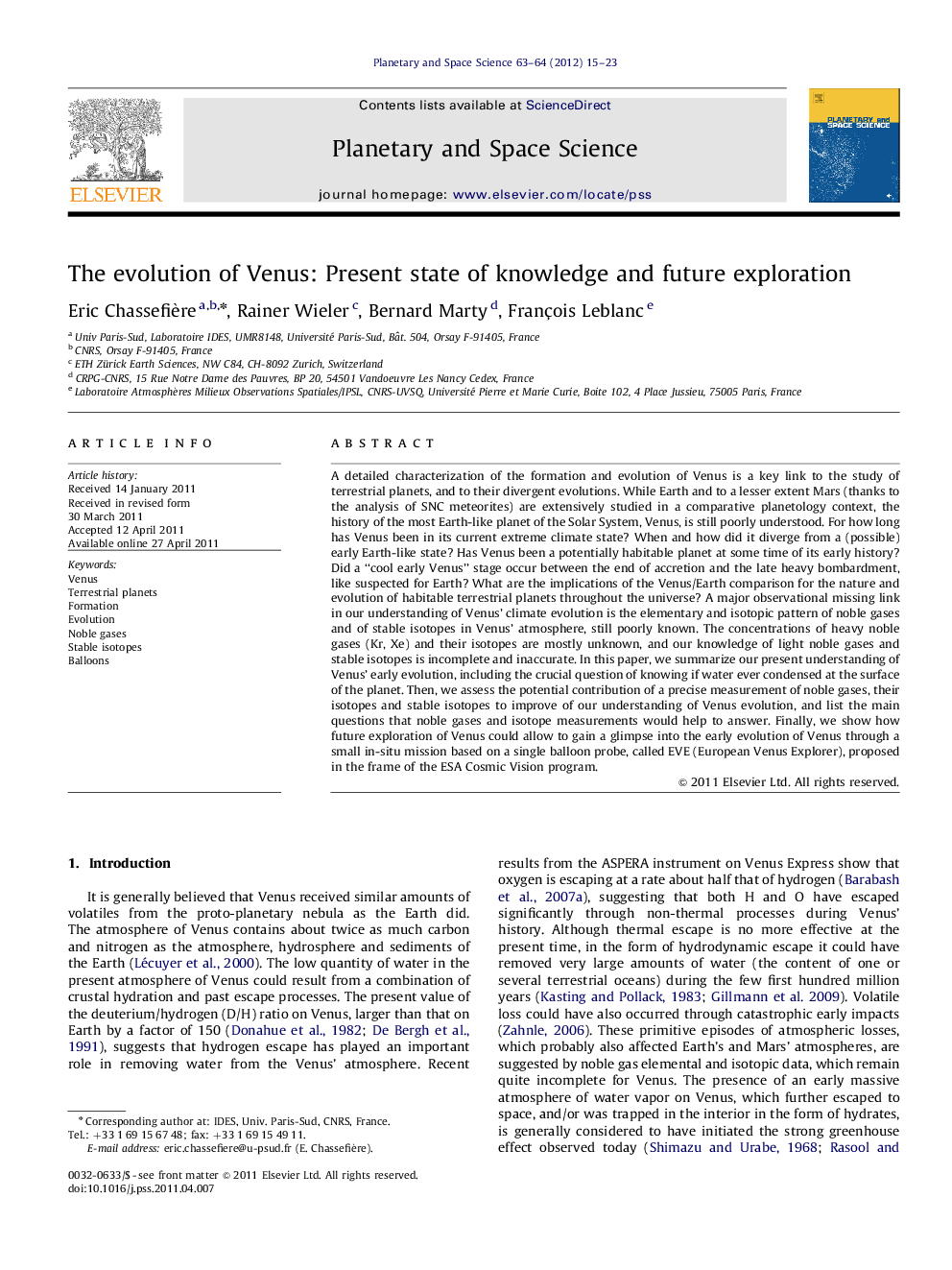| کد مقاله | کد نشریه | سال انتشار | مقاله انگلیسی | نسخه تمام متن |
|---|---|---|---|---|
| 1781431 | 1523961 | 2012 | 9 صفحه PDF | دانلود رایگان |

A detailed characterization of the formation and evolution of Venus is a key link to the study of terrestrial planets, and to their divergent evolutions. While Earth and to a lesser extent Mars (thanks to the analysis of SNC meteorites) are extensively studied in a comparative planetology context, the history of the most Earth-like planet of the Solar System, Venus, is still poorly understood. For how long has Venus been in its current extreme climate state? When and how did it diverge from a (possible) early Earth-like state? Has Venus been a potentially habitable planet at some time of its early history? Did a “cool early Venus” stage occur between the end of accretion and the late heavy bombardment, like suspected for Earth? What are the implications of the Venus/Earth comparison for the nature and evolution of habitable terrestrial planets throughout the universe? A major observational missing link in our understanding of Venus' climate evolution is the elementary and isotopic pattern of noble gases and of stable isotopes in Venus' atmosphere, still poorly known. The concentrations of heavy noble gases (Kr, Xe) and their isotopes are mostly unknown, and our knowledge of light noble gases and stable isotopes is incomplete and inaccurate. In this paper, we summarize our present understanding of Venus' early evolution, including the crucial question of knowing if water ever condensed at the surface of the planet. Then, we assess the potential contribution of a precise measurement of noble gases, their isotopes and stable isotopes to improve of our understanding of Venus evolution, and list the main questions that noble gases and isotope measurements would help to answer. Finally, we show how future exploration of Venus could allow to gain a glimpse into the early evolution of Venus through a small in-situ mission based on a single balloon probe, called EVE (European Venus Explorer), proposed in the frame of the ESA Cosmic Vision program.
► Need for a mission delivering a complete noble gas data base for Venus' atmosphere.
► A Similar need for a complete stable isotope data base for Venus' atmosphere.
► Trace back Venus' atmosphere evolution to constrain water and climate histories.
► Construct a unified scenario for the formation and evolution of terrestrial planets.
► Medium-size in-situ balloon mission called the “European Venus Explorer” (EVE).
Journal: Planetary and Space Science - Volumes 63–64, April 2012, Pages 15–23